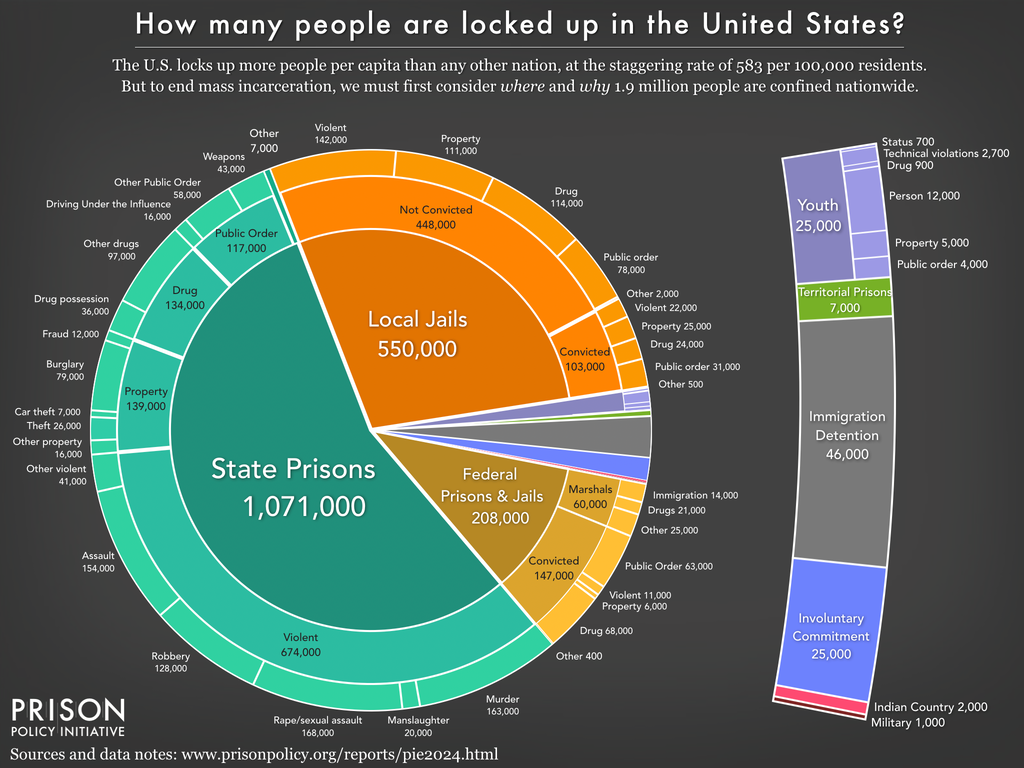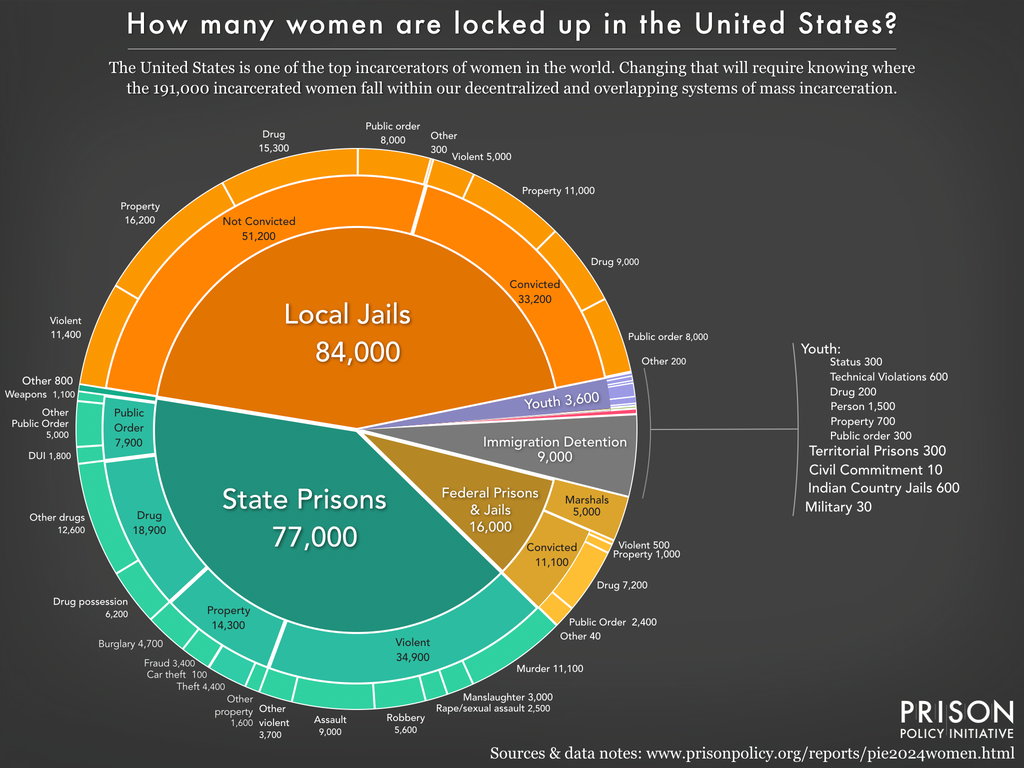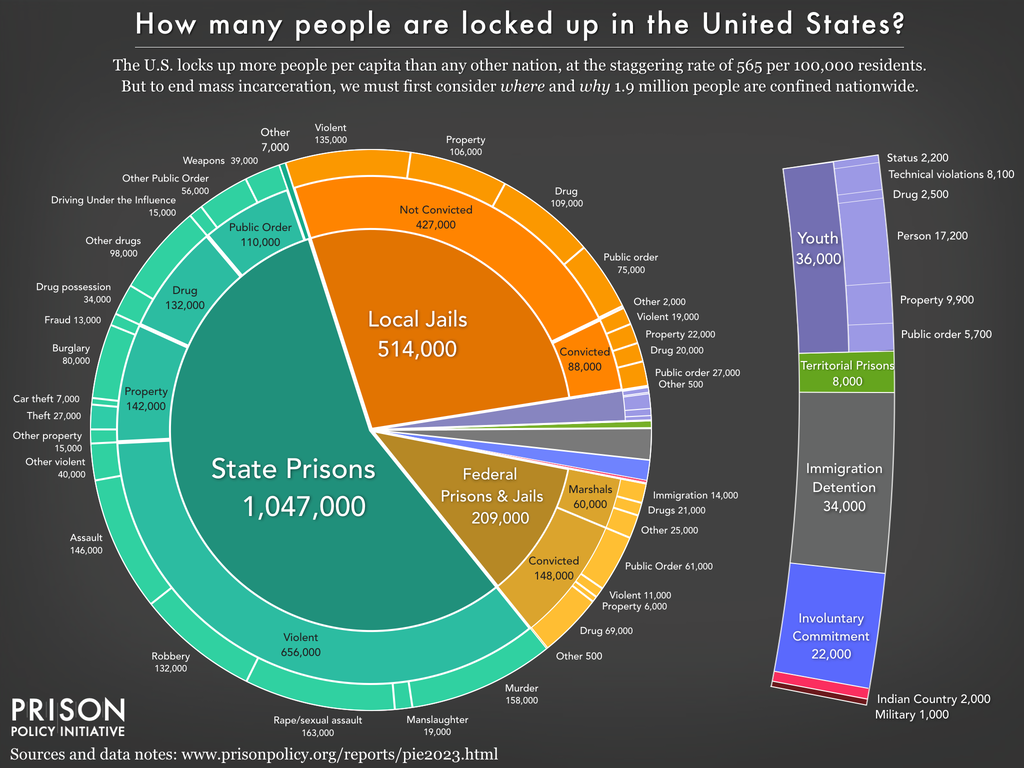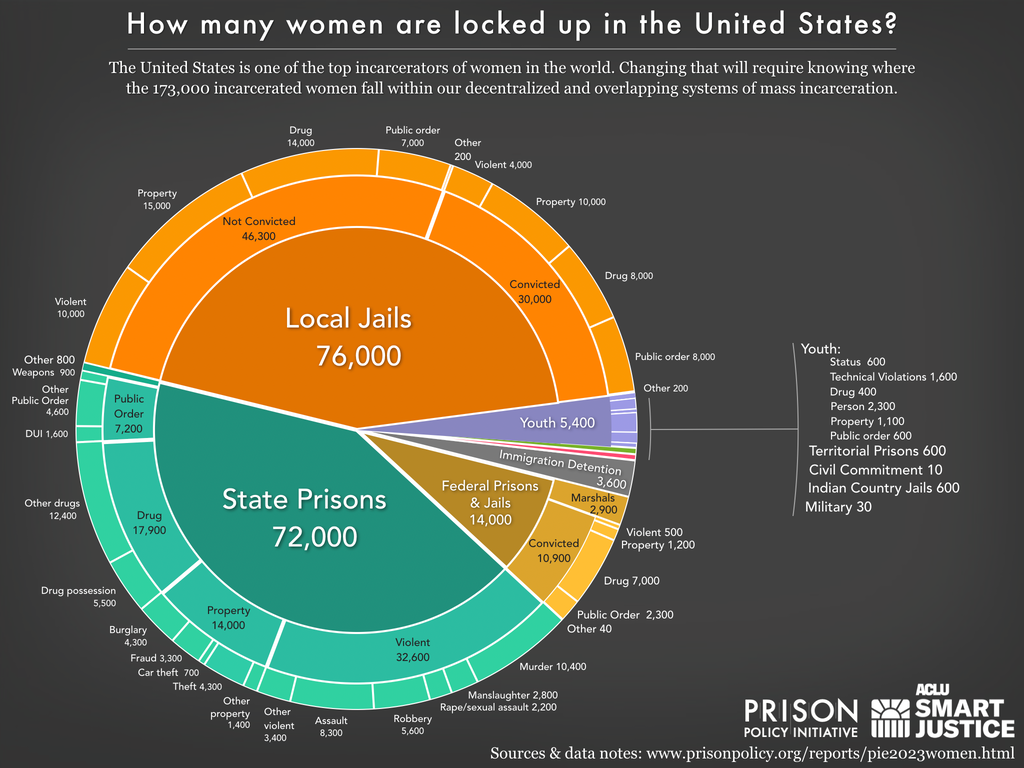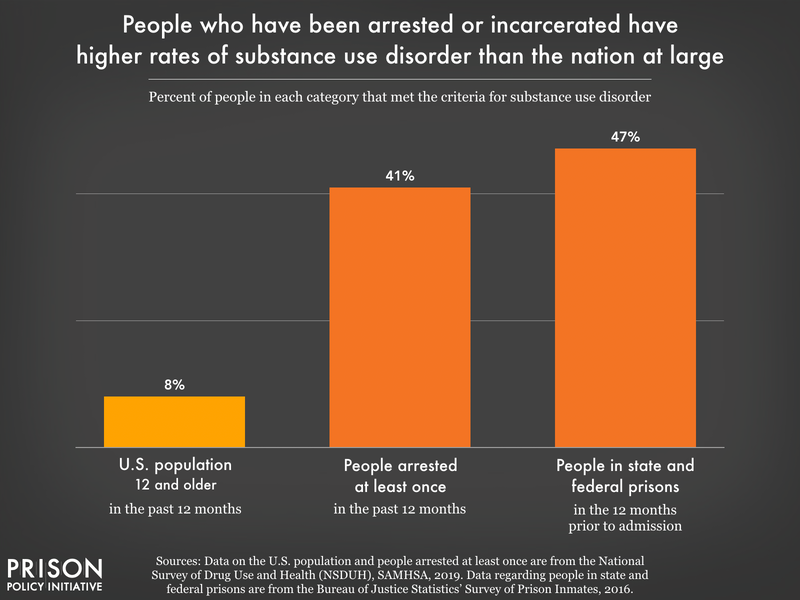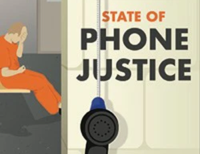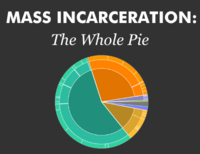Criminal legal system data is important to understanding how the system operates, but it’s highly limited, inaccessible, outdated, and fractured across thousands of jurisdictions. We spotlight some of the most persistent data gaps we came across in 2024.
by Brian Nam-Sonenstein and Wendy Sawyer,
December 19, 2024
At the Prison Policy Initiative, we often hear from journalists, advocates, and others looking for basic information about the criminal legal system. Unfortunately, too often we find ourselves unable to help because rudimentary facts about the system are hard to come by: a lot of things are simply not tracked, and the data that do exist are often limited, inaccessibly formatted, fractured across thousands of jurisdictions, and/or severely outdated.
So, this year, we began collecting some of the data gaps we’ve encountered in the course of our work, which we’ve compiled into a Data Wishlist. We’re publishing the wishlist for two reasons: 1) to highlight just how much basic information is missing in the criminal legal space, and 2) to encourage agencies, researchers, and others to compile and publish these data sets and fill these gaps, chipping away at the information black box around so many aspects of mass incarceration. As you will see, many of the gaps identified in our list would answer exceedingly simple questions about the system, how it functions, and who does (and does not) get punished. This list is by no means a comprehensive survey of criminal legal system data gaps, but we hope it helps people understand just how poor the data environment is and encourages people to chase down this information.
Do you have research, or are you planning to do research, that answers any of these questions? Reach out and let us know through our contact page.
Community supervision
Technical violation data
Data we’re looking for: What percentage of all annual arrests are for supervision violations?
Why it matters: We’ve written on several occasions about how technical violations contribute to unnecessary jailing.1 These violations contribute to crowding in jails and prisons, forcing people into traumatizing, burdensome interactions with the criminal legal system for acts that are not technically crimes at all. We know that, at the most recent count, at least 128,000 people were incarcerated for technical violations of probation and parole. While the FBI tracks arrests across many types of crimes, arrests for supervision violations are notably absent. “What proportion of arrests each year are for supervision violations” is an exceedingly basic question that we are sadly unable to answer without these data.
Pretrial supervision data
Data we’re looking for: How many people are under pretrial supervision of any kind?
Why it matters: Pretrial supervision has gained popularity as an ‘alternative to incarceration,’ but we’ve repeatedly covered how it functions as a pipeline to incarceration. This includes pretrial electronic monitoring — a faulty technology that further embeds systemic injustices in communities of color, creates new avenues of harm, and does remarkably little to increase court compliance or public safety. As pretrial supervision spreads across jurisdictions and takes many forms, it’s important that we have a better picture of how many people are being monitored under those various forms and, over time, to see which forms of supervision are becoming more (or less) common, or result in better (or worse) individual outcomes.
Conviction-based public registries and community supervision
Data we’re looking for: How many people are exclusively on registries as a form of supervision?
Why it matters: We’ve previously pointed out how the available data do not allow us to break apart those on registries from those still serving a sentence, making it difficult to get an accurate picture of how many people are being monitored outside of formal community supervision like probation and parole. Given the well-documented harms of registration, the variety of crimes that require registration, and the failures of registration to increase safety, it’s essential that we improve our understanding of the size and scope of this population.
Offense, sentencing, and conviction data
Conviction status for people on electronic monitoring
Data we’re looking for: What are the conviction statuses (e.g., pretrial vs. sentenced) for people on electronic monitoring?
Why it matters: As mentioned above, we’ve covered the problems with looking to electronic monitoring as an “alternative” to incarceration. According to the Vera Institute for Justice, approximately 254,700 adults were under some form of electronic monitoring in 2021, but we don’t know how many people were on electronic monitoring for pretrial supervision or how many were sentenced to it after being convicted of a crime. Currently, these data are spotty and strewn across local and state jurisdictions, which makes it hard to see the full picture of how many people are under surveillance, by whom, and where – and to hold officials accountable.
Offense data, by conviction status and demographics, for people in local jails
Data we’re looking for: What charges are people in local jails being held on? How do they vary by conviction status and demographic characteristics like state of residence, sex, race, and age?
Why it matters: Most people in local jails have not been convicted, but are detained on bail while awaiting trial. Knowing the charges for which they’re being held helps us evaluate how local jurisdictions are using jails, as well as how many people could be safely released. The Bureau of Justice Statistics (BJS) last collected these data at the national level in 2002, which we have had to rely on for the past two decades. The next iteration of that survey is currently underway, but it will likely be at least 2026 before BJS publishes the results. The Jail Data Initiative offers an alternative source for this data, but because jails include different information on their rosters, there are limitations to what we can do with it. The BJS is uniquely positioned to collect this information and should do so more than once every two decades.
Women’s offenses related to intimate partner violence
Data we’re looking for: How many women convicted of homicides committed offenses in the context of intimate partner violence?
Why it matters: We’ve tried to illuminate women’s unique pathways to, and experiences of, incarceration. Some research suggests that significant portions of the population of incarcerated women have been incarcerated for defending themselves against or in response to living with abusive partners. Further research into this area would help us get a handle on how many women convicted of homicides were living in the context of intimate partner violence.
Felony and misdemeanor sentencing by state (and nationally)
Data we’re looking for: What are the mean and/or median felony prison or jail sentences in each state (or nationally)? And what do misdemeanor sentences look like on the state or national level?
Why it matters: National felony sentencing data hasn’t been compiled since at least 2009, and more recent data published by the Bureau of Justice Statistics are based only on people who have been released. Ideally, data on felony sentencing that aren’t limited to carceral sentences (i.e., include probation, fines, or other requirements) would help us get a better sense of trends in felony sentencing. Simply put: we don’t really know, on an aggregate level, how judges are responding to felony convictions. Meanwhile, we know practically nothing about misdemeanor sentencing but would like answers to basic questions, such as how many people are released with “time served” from pretrial detention, how many are incarcerated (and for how long), how many receive intermediate sanctions such as community service or fines, and how many receive community supervision (and for how long)?
Updated sentencing outcomes for convictions internationally
Data we’re looking for: What do sentencing outcomes for convictions look like globally, and how do they compare to those in the United States?
Why it matters: Through our States of Incarceration series, we’ve tried contextualizing the U.S.’s reliance on mass incarceration by comparing it to that of other nations, but data are limited. We could improve this picture if we had up-to-date information on sentencing outcomes in other nations. New data haven’t been released since the early 2000’s.
Good time credit application
Data we’re looking for: At the state level, how have “good time” or earned time sentence credits been applied and how often are they applied incorrectly, leading people to spend more time locked up than they should?
Why it matters: We’ve noted that good time credits are a potentially powerful tool for decarceration and an important mechanism for shortening prison sentences. Misapplied good time is therefore a serious obstacle to release. In this 2023 article from Kentucky, Jason Riley reports that people with good time credits have been held long after their release dates because the credits were misapplied. The underlying data here are from a state audit. This information should be publicly available, and we should have it for every state, but we don’t.
U.S. Marshals conviction and sex data
Data we’re looking for: How many people in U.S. Marshals custody have been convicted, and how does that data break down by sex?
Why it matters: We know tragically little about people in custody of the U.S. Marshals. Currently, we only have the percentage of people in jail who were female and held for the Marshals at the time of the Bureau of Justice Statistics’ 2002 publication of the Survey of Inmates in Local Jails. These data are not just old – they’re also self-reported and therefore not consistent with the more recent administrative data available about people in Marshals’ custody. Additionally, it’s unclear how many people in Marshals’ custody have even been convicted or not. Their website says they house over 63,000 “pre-sentenced” people in various jurisdictions, but the Bureau of Justice Statistics’ 2019 Census of Jails shows a conviction rate of 35% for those held in local jails. We’d like answers to these very simple questions.
Family policing and youth detention data
Referrals by race and ethnicity for the child welfare system
Data we’re looking for: How do referrals to the child welfare system (often referred to by advocates as the family policing system) break down by race/ethnicity?
Why it matters: We’ve written about how the family policing system operates as an extension of the carceral state, but a glaring omission in the available data pertains to the race and ethnicity of children referred to the system. As with all criminal legal system data, this information is crucial to understanding patterns of practice in enforcement — who gets targeted for family policing and who does not?
Youth who are parents in detention
Data we’re looking for: How many youth in juvenile detention are pregnant or have children?
Why it matters: We’ve covered the traumatic consequences of mass incarceration on children and incarcerated parents, and while there’s information on parents in the adult system, we haven’t seen as much on parents in youth confinement. There’s data from the 2003 Survey of Youth in Residential Placement, but it’s extremely outdated. This 2018 article mentions that “approximately one third of female juvenile offenders have ever been pregnant,” and “male adolescents involved with the juvenile justice and foster care systems are also at high risk for getting someone pregnant, with 18% to 31% reporting that they have fathered a child.” But for the most part, we don’t really have any idea of how many kids in youth confinement are also struggling with parenthood while incarcerated.
The flow of youth through confinement facilities
Data we’re looking for: How many youth exit residential placement facilities each year, and how many of them receive aftercare or reentry services?
Why it matters: We’ve written before about how many of the problems plaguing the adult criminal legal system are mirrored in the juvenile justice system. And we know that in the adult context, there aren’t enough reentry services to meet the need – but is the same true for youth? The most recent data we know of were collected in 1999, but much has changed since then. Without the relevant data, it’s difficult to tell how many youth today who are at risk of further criminal legal system involvement are getting the support they need.
Incarceration experience and conditions
Healthcare quality
Data we’re looking for: What is the quality of healthcare in jails and prisons?
Why it matters: While we know that criminalized populations tend to be sicker and have more serious healthcare needs than the general population, we know practically nothing about the quality of healthcare in jails and prisons, other than that it’s bad. Additionally, much of the data we do have lacks the perspectives and experience of the patients: incarcerated people. A basic evaluation of the state of healthcare delivery in jails and prisons is an entry-level need in the corrections space.
Healthcare outcomes in corrections compared to the community
Data we’re looking for: How do healthcare outcomes in prisons and jails compare to the rest of their state?
Why it matters: Similarly, there’s little research available attempting to compare healthcare outcomes in community versus carceral settings. It’s difficult to gauge the extent to which poor healthcare outcomes have to do with the provision of care in punitive settings compared to in the community.
Mortality among states with privatized healthcare
Data we’re looking for: How do mortality rates compare between states with different kinds of healthcare delivery?
Why it matters: While most jails and prisons in the U.S. have privatized medical services, there’s very little research available comparing mortality outcomes between different healthcare delivery models. Having this data could help improve our understanding of whether there’s a distinction between public and private healthcare delivery. This information would be a tiny step forward in evaluating basic outcomes of different correctional healthcare delivery models.
Perspectives of incarcerated people on understaffing
Data we’re looking for: How do incarcerated people experience understaffing? Where do they feel it most acutely, and what do they think should be done about it?
Why it matters: “Understaffing” is the scapegoat for virtually all crises in corrections today, but notoriously absent from analyses are the perspectives of incarcerated people on the subject as well as calls for decarceration as a solution. There have been some efforts to incorporate their perspectives in examining understaffing, but we think there should be much more research and reporting to this end.
Strip search data, broken down by geography and including historical data
Data we’re looking for: How many strip searches are happening in state prisons, and which states do not require tracking this information?
Why it matters: Strip searches are used routinely in jails and prisons, including around visitation, as a general contraband and drug interdiction strategy. These searches have profoundly harmful and counterproductive effects, and create opportunities for acts of sexual violence by corrections officers. Without basic data on strip searches, it’s impossible to know the frequency with which they’re practiced and whether they’re more common in the U.S. compared to other countries.
Economics and financial exploitation
Relative costs for jail, prison, work release, house arrest, probation, and treatment/counseling
Data we’re looking for: What are the costs for incarcerating someone in a jail or prison compared to placement in work release, house arrest, probation, and treatment/counseling, and how do these vary across states or regions?
Why it matters: We have very little sense of how the costs of incarceration compare to things like work release, house arrest, and probation, let alone responses like treatment/counseling or other non-punitive measures. Having this comparative economic data could help shed light on how our society spends money – and what it does (or doesn’t) get in return on that investment.
Jail-level inmate welfare fund data
Data we’re looking for: How many jail jurisdictions have “Inmate Welfare Funds,” and what are their cash balances?
Why it matters: Earlier this year, we published a detailed report on Inmate Welfare Funds (IWFs) – special prison and jail accounts that are funded with money from phone calls, commissary purchases, and other fees. IWFs are intended to benefit the incarcerated population but are often used as slush funds for corrections departments. While we were able to collect IWF policies for all 50 state prison systems, a much heavier lift is to collect and organize these policies for jail systems. Additionally, it would be helpful to have a sense of IWF balances and cash flows in state prison and local jail systems. Having these data would help greatly expand our window into IWFs, how they are designed, how they function, and their exploitative power over incarcerated people and their families.
Pre- and post-incarceration data
Labor force participation for formerly incarcerated people
Data we’re looking for: What percentage of the U.S. labor force is formerly incarcerated?
Why it matters: This past Labor Day, we chronicled ten ways in which mass incarceration is an engine of economic inequality, including using criminalization as a means to discipline and contain labor movements. While we have some data on the experience of trying to obtain work and working after incarceration, we don’t know what proportion of the labor force is made up of formerly incarcerated people. (We would also love to be able to update our research on the unemployment rate of formerly incarcerated individuals, but to our knowledge, no comparable national data have been collected since 2008.)
Updated pre-incarceration incomes of people in prison and jail
Data we’re looking for: How much did incarcerated people earn before they went to prison or jail?
Why it matters: Evidence that incarcerated people are typically much poorer than non-incarcerated people — even before they are arrested — helps show the injustice of a criminal legal system that treats people differently based on their wealth. For example, many people in local jails are there simply because they can’t afford money bail, and people who can’t afford private attorneys may be assigned public defenders with unmanageable caseloads who can’t spend the same time on their cases. Yet the Bureau of Justice Statistics has not published income data since its surveys in 2002 (for jails) and 2004 (for prisons).2 We have had some success using the National Survey of Drug Use and Health to get income data about people recently arrested and booked into jails, as well as people recently on probation and parole, but a more targeted sample of people with current criminal legal system involvement would be better.






